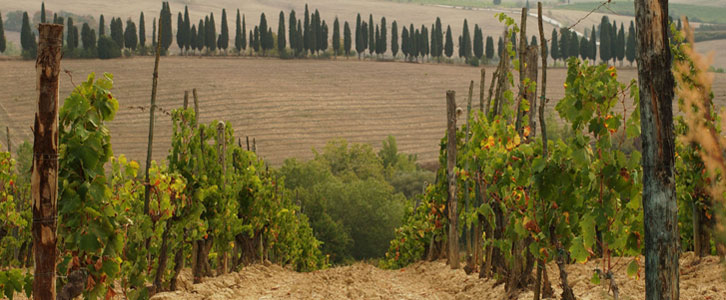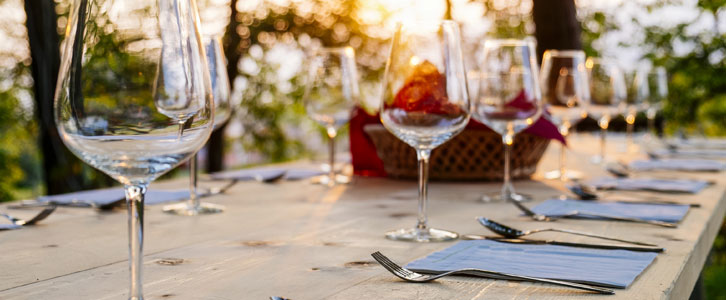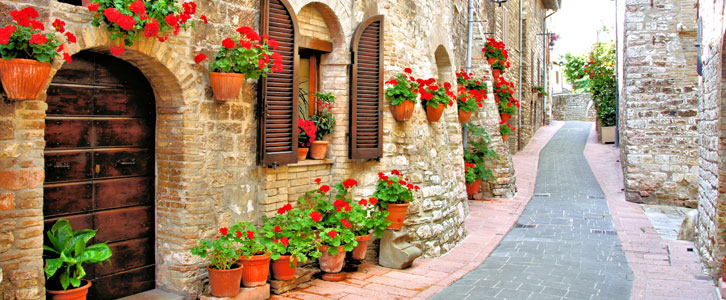Chianti is the name of a red wine and also the largest zone in the world famous Italian wine region, Tuscany.
Once served in straw bottles as table wine, Chianti can cost as little as $10 or as much as $365 for the more vintage Chianti wines. Wine lovers know this region well, for it’s also the home of Montepulciano and Montalcino wines, as well as Super Tuscan wines.
The timeless pleasure of a glass of Chianti with a plate of spaghetti Bolognese never gets old, although the Wall Street Journal notes that many sommeliers consider a Chianti too commonplace to recommend and prefer to talk about newer wines, causing Chianti's popularity to ebb and flow.
The Ideal Place to Make Wine

In the heart of Italy, Tuscany’s warm and dry climate with clay-based soil is ideal for cultivating Chianti grapes and olives. It’s been a legendary destination for artists such as Da Vinci, Botticelli and Van Gogh, who’ve made its green landscapes, winding roads and hills covered in vineyards familiar to many.
The most highly regarded Chiantis are from the Chianti Classico and Chianti Rufina zones. Both are recognized as D.O.C.G., satisfying the most stringent wine making requirements, decided by government panels (now there’s a fun job!).
Chianti wines are mostly made from Sangiovese grapes and combined with either white wines or other red wine varieties. Aging and grape composition are important. For a wine to retain its status as a Chianti, it must contain at a minimum 80 percent Sangiovese grapes. Some Chiantis are even made from 100 percent Sangiovese.
Enjoying Chianti at Your Table

The taste of Chianti ranges from a variety of strong fruit flavors like dark cherry, plum and raspberry, with notes of mint, herbs and spices. All have Chianti’s signature dry acidity that pairs well with food, particularly classic Italian cuisine such as lasagna, pizza and spaghetti.
The aging process starts at a minimum of three months and goes all the way up to two and a half years. For example, a Chianti Superiore must be aged at least nine months before being sold and three of those months must be in the bottle. However, a Chianti Montalbano can be sold after only three months of aging.
Tuscan vineyards stretch all the way to Florence, Siena, Pisa and Arezzo. The region’s wine growing is so vast that it has been divided into eight Chianti sub-zones.
A trip to Tuscany is a must regardless of whether you’re a wine connoisseur or not.
Visiting Tuscany

Chianti is near the capital of Tuscany, Florence, as well as Siena, Arezzo and Pisa. Siena and Florence are the biggest cities in the area, with many hotels. Outside the urban areas, you’ll find hotels, villas, apartments, bed and breakfasts and even wineries offering country-style accommodations. If you're staying in one of the main cities in Tuscany like Florence, Siena or Pisa then hotels are probably your best option.
In the countryside, owners typically work with tour companies and travel agents to provide special offers and custom arrangements that are unavailable through the big booking websites.
Of course, a wine tasting when visiting Chianti is in order. It’s reasonably easy to get around Chianti and access different wineries because the train, bus and car routes are well-connected.
The biggest problem you’ll have if you drive yourself is navigating the winding roads and not being distracted by the enchanting landscapes around you. Tuscany is heaven for wine lovers and art lovers alike.